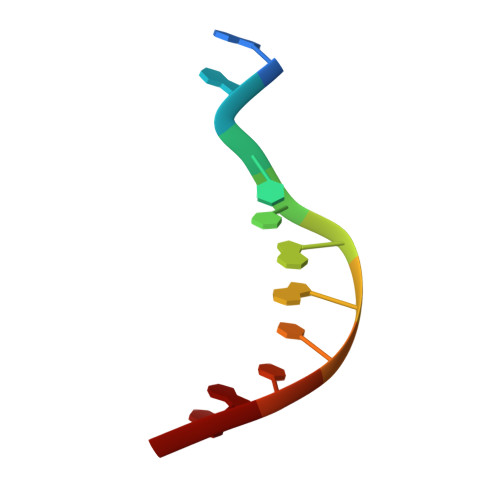B-DNA at atomic resolution reveals extended hydration patterns.
Vlieghe, D., Turkenburg, J.P., Van Meervelt, L.(1999) Acta Crystallogr D Biol Crystallogr 55: 1495-1502
- PubMed: 10489444
- DOI: https://doi.org/10.1107/s0907444999007933
- Primary Citation of Related Structures:
431D - PubMed Abstract:
Despite the importance of hydration around DNA in the understanding of its conformation and interactions with other molecules in many biological processes, only limited atomic resolution information is available. Crystal-engineering techniques, which were originally developed to mimic DNA base triplets in a crystal lattice, also eliminate the rotational disorder of oligonucleotides around their helical axis and thereby enhance the resolution of the structure analysis. We have determined the low-temperature crystal structure of the synthetic DNA decamer d(GGCCAATTGG) at atomic resolution (1. 15 A) using 17700 reflections and have characterized the highly organized hydration patterns in both grooves. The narrow d(AATT) minor groove is occupied by an 'extended hydration spine' alternately bridging base pairs and phosphate O1P atoms of opposite strands, while a distinctive pattern of parallel water ribbons is observed in the major groove. This analysis provides structural insight into the correlation found between narrow minor-groove width and occurrence of the B(I) conformation and can be used to design new minor-groove binders. By their location between adjacent helices, two fully hydrated magnesium ions further stabilize the crystal packing. The structure also provides details of the hydration and conformation of G.GC triple helices.
Organizational Affiliation:
Department of Chemistry, Katholieke Universiteit Leuven, Celestijnenlaan 200F, B-3001 Heverlee, Belgium.















